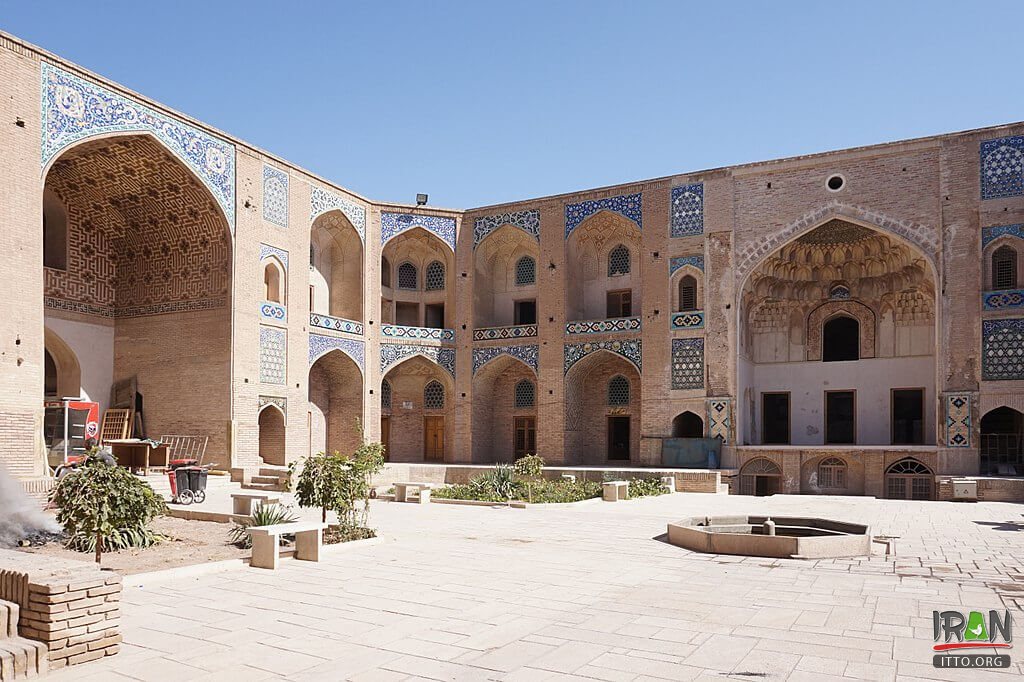Kerman city lies on a sandy plain, 5,738 feet (1,749 metres) above sea level, under barren rocky hills. Surrounded by mountains on the north and east, it has a cool climate and frequent sandstorms in the autumn and spring. The population is mostly Persian-speaking Muslims, with a Zoroastrian minority. Kerman is the largest carpet-exporting centre of Iran. The city formerly owed its industrial reputation to its shawl making, but that industry was surpassed by carpet making, particularly in Maahani suburb.
In the mid-1970s an industrial centre was established that included a cement plant, a textile factory, and a cold-storage plant. There is a thermoelectric plant; water is brought by qanats (underground aqueducts) from the surrounding hills. Kermān is linked by road to Bandar-Abbas and Mashhad.
Kerman city was probably founded by Ardashir I (reigned 224–241 ce) of the Sasanian dynasty (although Ptolemy mentions the name of a city called Kerman in the 2nd century) and was called Behdesir, Berdesir, or Berdeshir. Under the Safavids, who took control in 1501, it came to be known as Kerman and was made capital of a province. The city was sacked by the Uzbeks in 1509 but was quickly rebuilt. Declining Safavid power in the 17th and early 18th centuries allowed Kermān to be attacked and occupied by Afghan tribesmen in 1720. Kerman was pillaged by Aagha Mohammad Khan Qajar when Lotf-Ali Khan of the Zand dynasty took refuge there. It was rebuilt under Fath-Ali Shaah, the founder of the Qajar dynasty (ruled 1797–1834).
The bazaar is large, and there are some old mosques, including Masjed-e Malek (Mosque of the King, 11th century, now restored), Masjed-e Jomeh (Friday Mosque), Masjed-e Bazar-e Shaah (Mosque of the Shah's Bazaar; founded under the Seljuqs), and Masjed-e Pa Minar (built in 1390 under the Timurids). At the western end of the bazaar is the Ark (Arg), the former citadel of the Qajar dynasty. Next to it is the Qaleh, allegedly constructed as a citadel by the Afghans during a short-lived subjugation of Kerman in 1722. On the Kerman plain stands the Jabel-e Sang (Mountain of Stone), a tomb built probably in the 11th or 12th century, and to the west is the Bagh-e Sirif, a luxuriant garden.

Ganjali Khan Mosque (Complex) - Kerman
Kerman province is bounded by the provinces of Fars on the west, Yazd on the north, South Khorasan (Khorasan Jonoobi) on the northeast, Sistan va Baluchestan on the east, and Hormozgan on the south. It includes the southern part of the central Iranian desert, the Dasht-e Lut. The southern Lut is relatively dry and unsaline, while in the east are sand dunes and in the west, wind-carved ridges 180–240 feet (55–70 metres) high, called kalut. Elsewhere are wind-eroded cuestas, locally called shahr lut. Chains of mountains stretch northwest–southeast across much of the ostan; Kooh-e Laleh-Zar (14,350 feet / 4,374 metres) and Kooh-e Hazaran (14,500 feet / 4,419 metres) are extinct volcanoes. The Halil-Rood is the only river of importance. In the lowest depressions, the dry heat of summer is unsurpassed anywhere in the world, but most of the upland valleys enjoy a pleasant climate.
The hills are now almost bare; settlement and cultivation are patchy because of the scarcity of water and occur in scattered oases and in the foothills of low interior mountain chains. The upland regions produce cereals, cotton, sugar beets, oilseeds, fruit, and vegetables.

